 A look inside the Human Neuroscience Institute and research led by professor Valerie Reyna on human decision making. Read more
A look inside the Human Neuroscience Institute and research led by professor Valerie Reyna on human decision making. Read more

 A look inside the Human Neuroscience Institute and research led by professor Valerie Reyna on human decision making. Read more
A look inside the Human Neuroscience Institute and research led by professor Valerie Reyna on human decision making. Read more
Understanding why college students check Facebook so often and whether the stigma of having a father in jail affects elementary school teachers’ expectations of students are just two of many questions social scientists are exploring using research grants awarded last month by theInstitute for the Social Sciences.
Twice yearly, the ISS provides up to $12,000 to social science faculty for research. Priority is given to projects led by tenure-track faculty early in their careers.
Natalya Bazarova, assistant professor in communication, is seeking to understand the gratification and psychological mechanisms, including motivating factors and habit, that drive young adults to check Facebook so frequently.
Christopher Wildeman, associate professor of policy analysis and management, expects that his study working with 300 elementary school teachers – using a research design that manipulates the paternal incarceration status of fictional students – may have implications for policy interventions.
Elaine Wethington, professor in human development and sociology, says: “Little is known about the quality of older couples’ marital relationships and the formation and dissolution of their romantic and sexual relationships." Her research, which focuses on people over age 50, looks at marital quality compared across different age cohorts, the emotional and financial consequences of de-coupling in later life, living arrangements among those who divorced after 50, and the formation of new sexual and romantic relationships in later life.
Sarah Kreps, associate professor of government, is examining the reasons why Americans support humanitarian intervention to promote the welfare of foreign citizens from man-made violence.
Shannon Gleeson, associate professor in labor relations, law and history, explores the collaborations that labor unions, immigrant rights organizations, worker centers and legal-aid groups in the United States have with the Mexican Consulate to enforce workplace rights of immigrant workers.
How do different kinds of experts and organizations in the electric power sector manage the diverse risks – including cyber-attacks, power outages and environmental harm – associated with a “smart” electrical grid? This is a question Rebecca Slayton, assistant professor in science and technical studies, seeks to answer.
To understand the cognitive process guiding environmental preferences, Ricardo Daziano, assistant professor in the School of Civil and Environmental Engineering, will have 600 adults living in New York City complete a Web-based survey of consumers’ willingness to pay to reduce carbon emissions.
By collecting data from college students and their summer internship employers, Poppy McLeod, associate professor, and Alicia Orta-Ramirez, senior lecturer, both in communication, hope to answer the question: “How do students’ campus-based teamwork experiences relate to demonstration of teamwork and other interpersonal skills in the workplace?”
Sofia Villenas, associate professor in anthropology, investigates teaching and learning about racial justice, equity and citizenship that occurs outside traditional classroom settings at festivals, protests and community forums to better understand how adults and youths learn about civics and democratic participation.
A research team led by Chris Barrett, the David J. Nolan Director of the Dyson School of Applied Economics and Management, and funded by the World Bank is examining whether irrigation project improvements and changing water condition stemming from climate change prompt farmers in Nepal to be more receptive to agricultural extension services. The ISS grant will fund the team’s travel.
Assistant Professor Ortiz-Bobea in the Dyson School is using historic French statistical agricultural yearbooks to analyze how government regulation contributed to the emergence of a higher-quality market for wine.
Working with coffee growers in the Popayán region of Colombia, Arnab Basu and Miguel Gómez, professors in the Dyson School, are trying to understand how membership-based organizations affect an individual member’s risk and time preferences and the propensity to trust.
Julieta Caunedo, assistant professor of economics, is using sale and auction price data on used agricultural equipment to help explain how countries adopt new technologies in the agricultural sector. Her work is co-funded by the President’s Council of Cornell Women.
Since the ISS small grant program began in 2005, more than 200 projects have received support. Applications for spring 2015 ISS grants are due Feb. 3, 2015.
Lori Sonken is the staff writer for the Institute for the Social Sciences.
After nationwide concern about elder abuse by family members – and by nursing home staffers suspected of harming residents – a Cornell University-Weill Cornell Medical College study finds a high level of resident-to-resident elder mistreatment.
Nearly one in five nursing home residents in 10 facilities across New York state were involved in at least one aggressive encounter with fellow residents during the four weeks previous to the study.
“These altercations are widespread and common in everyday nursing home life,” said Karl Pillemer, the Hazel E. Reed Professor in the College of Human Ecology’s Department of Human Development who also serves on the Weill Cornell faculty. “Despite the acute urgency of the problem, resident-to-resident mistreatment is underreported. Increased awareness and the adoption of effective interventions are greatly needed.”
The epidemic of resident-to-resident hostile behavior was reported Nov. 8 at the 2014 Gerontological Society of America Annual Scientific Meeting in Washington, D.C., by Pillemer and his Weill Cornell colleague, Mark S. Lachs, M.D., professor of clinical medicine and medical director of the New York City Elder Abuse Center.
The researchers say theirs is “the first study to directly observe and interview residents to determine the prevalence and predictors of elder mistreatment between residents in nursing homes,” and involved more than 2,000 residents. Data sources included staff interviews and reports, direct observation and a research-based questionnaire taken by residents and staff.
The research also suggests that individuals who are most likely to be involved in a mistreatment incident are younger, less cognitively and physically impaired, and prone to disruptive behavior, compared to fellow residents. There was no significant difference between men and women. African-Americans were less likely to be involved than non-Latino white and Latino residents. (The investigators noted that the study did not distinguish victims from perpetrators of resident-to-resident elder mistreatment.)
People who typically engage in resident-on-resident abuse are somewhat cognitively disabled but physically capable of moving around the facility, Pillemer told the gerontology conference. “Often, their underlying dementia or mood disorder can manifest as verbally or physically aggressive behavior. It’s no surprise that these individuals are more likely to partake in arguments, shouting matches, and pushing and shoving, particularly in such close, crowded quarters.”
Collaborating on the study was Jeanne Teresi, M.D., of the Hebrew Home for the Aged at Riverdale, New York. The study was funded by grants from the National Institute on Aging, the New York State Department of Health and the National Institute of Justice.
How are you hurting?
Nursing homes provide care for about 1.5 million frail older Americans. It may come as a surprise that violence and verbal aggression are also a part of nursing home life.
Inappropriate, disruptive or hostile behavior among nursing home residents is a sizable (19.8 percent) and growing problem, according to the new Cornell research.
Specific types of mistreatment include verbal incidents, such as cursing, screaming or yelling at another person (16 percent); physical incidents, such as hitting, kicking or biting (5.7 percent); and sexual incidents, such as exposing one’s genitals, touching other residents or attempting to gain sexual favors (1.3 percent).
A fourth category, which involved 10.5 percent of people, included unwelcome entry into another resident’s room or going through another resident’s possessions.
“We urgently need strategies to address this underrecognized problem, which affects fully one-fifth of all residents, erodes their quality of life and is stressful for staff to manage,” said Lachs.
Jeff Young is a writer in the Weill Cornell Medical College Office of Public Affairs.
Reprinted from Cornell Chronicle, November 4, 2014
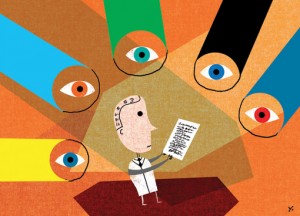 A proposal for research to detect racial bias in the research peer review process has earned a second-place prize from the National Institutes of Health’s Center for Scientific Review (CSR) for two College of Human Ecology faculty members: Wendy M. Williams and Stephen J. Ceci.
A proposal for research to detect racial bias in the research peer review process has earned a second-place prize from the National Institutes of Health’s Center for Scientific Review (CSR) for two College of Human Ecology faculty members: Wendy M. Williams and Stephen J. Ceci.
NIH sponsored the national “Great Ideas” contest in response to recent findings that African-American principal investigators have a 10.4 percent lower funding rate on NIH grant proposals. The goal was to encourage the development of novel approaches to study and understand the mechanisms leading to the black funding deficit, as well as ways to address the issue.
The professors of human development outlined experiments to answer the question: Do investigator race and/or ethnicity of topic target population (considered separately as well as together) influence research evaluations? “By better understanding why and under what conditions reviewers assign lower scores to grants by African-American PIs, we can target solutions to ensure optimal impact of resources for solving the problem and eliminating inequalities in the grant-review process,” Williams and Ceci wrote.
Williams and Ceci were awarded a cash prize of $5,000 for their “Great Idea.”
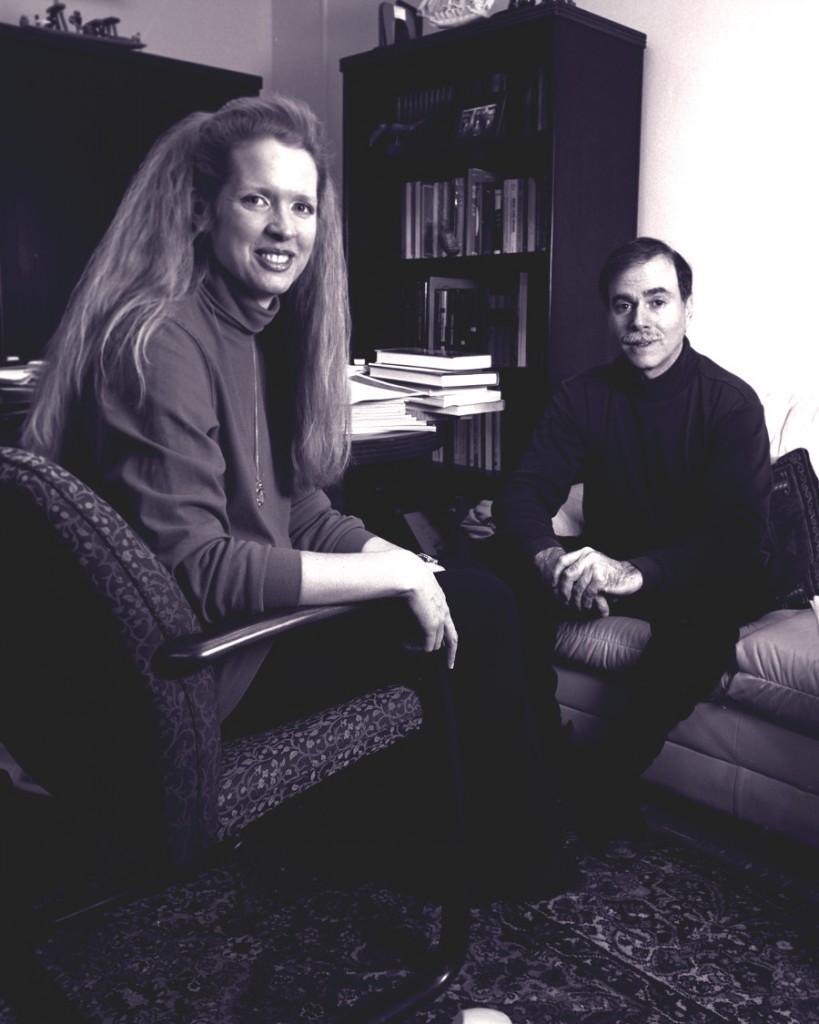 Until recently, universities deserved their reputations as bastions of male privilege and outright sexism say Cornell professors Steve Ceci and Wendy Williams in their recent New York Times op-ed piece. But times have changed. Many of the common, negative depictions of the plight of academic women are based on experiences of older women and data from before the 2000s, and often before the 1990s. That’s not to say that mistreatment doesn’t still occur — but when it does, it is largely anecdotal, or else overgeneralized from small studies. They found that when the evidence of mistreatment goes beyond the anecdotal, it is limited to a small number of comparisons of men and women involving a single academic rank in a given field on a specific outcome. Read more
Until recently, universities deserved their reputations as bastions of male privilege and outright sexism say Cornell professors Steve Ceci and Wendy Williams in their recent New York Times op-ed piece. But times have changed. Many of the common, negative depictions of the plight of academic women are based on experiences of older women and data from before the 2000s, and often before the 1990s. That’s not to say that mistreatment doesn’t still occur — but when it does, it is largely anecdotal, or else overgeneralized from small studies. They found that when the evidence of mistreatment goes beyond the anecdotal, it is limited to a small number of comparisons of men and women involving a single academic rank in a given field on a specific outcome. Read more
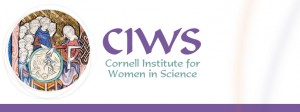 By H. Roger Segelken
By H. Roger Segelken
Reprinted from Cornell Chronicle, November 4, 2014
A newly published examination of reasons for female academics’ ongoing underrepresentation in math-intensive fields analyzes a very long list of purported culprits – before coming to a surprising conclusion.
Cornell’s Stephen J. Ceci and Wendy M. Williams, both of the Department of Human Development, are joined by economists Donna K. Ginther of the University of Kansas and Shulamit Kahn of Boston University for a whole-issue report, “Women in Academic Science: A Changing Landscape,” in the October 2014 journal, Psychological Science in the Public Interest.
Ceci and colleagues address numerous factors alleged to be responsible for the shortage of women in math-intensive fields of academic science. The 67-page article first reviews older data, then undertakes new analyses of factors alleged to be responsible for the dearth of women in these fields.
Alleged factors include biased hiring, chilly climate, productivity, hours worked, math aptitude scores, average impact ratings, job satisfaction, and promotion and tenure rates. Their conclusion may surprise some readers whose opinions are based on media headlines.
They find that, with some notable exceptions, the playing field is now level for women and men in terms of hiring into tenure-track appointments, tenure, impact, promotion, job satisfaction and remuneration.
The single biggest change, the authors believe, has been time itself: In contrast to women’s status several decades ago, today women and men fare comparably in the academic science pipeline – again, with some exceptions that the authors describe.
Observed sex differences have their roots long before application to tenure-track jobs, starting in adolescence and amplified in high school (where fewer women take advanced placement courses in calculus and physics) and in college.
The authors summarize their findings by urging readers to go beyond the rallying cries of the past and focus on current challenges facing women: “We conclude by suggesting that although in the past, gender discrimination was an important cause of women’s underrepresentation in scientific academic careers, this claim has continued to be invoked after it has ceased being a valid cause of women’s underrepresentation in math-intensive fields.”
Consequently, the authors continue, “current barriers to women’s full participation in mathematically-intensive academic science fields are rooted in pre-college factors and the subsequent likelihood of majoring in these fields.”
They recommend that “future research should focus on these barriers rather than misdirecting attention toward historical barriers that no longer account for women’s underrepresentation in academic science.”
The Paper
New York Times: 'Academic Science Isn’t Sexist'
Association for Psychological Science: 'Gender Fairness Prevails in Most Fields of Academic Science'
Stephen Ceci
Wendy Williams
College of Human Ecology
By Karene Booker
Reprinted from Cornell Chronicle, November 6, 2014

A hammer has many uses – breaking, prying, bending – but we all know that hammers are supposed to be for hammering nails into wood. It turns out we not only learn such cultural conventions when we’re very young, we can transmit them, too.
A recent Cornell study finds that toddlers notice subtle social clues to figure out what actions of others may be socially or culturally important and then preferentially share this information with others.
The findings show that social context influences children’s transmission of information, perhaps playing a role in the dissemination of cultural conventions from a young age, say authors Christopher Vredenburgh, graduate student in the field of human development; Tamar Kushnir, the Evalyn Edwards Milman Assistant Professor of Child Development in the College of Human Ecology; and Marianella Casasola, associate professor of human development.

In their study, two-year-olds were shown two new toys that each light up and make a sound. One action was demonstrated by a person exploring the toy on their own without engaging the child, and one was demonstrated by a person using eye contact and child-directed speech, known informally as baby talk or “motherese,” cues that children pick up on as signals that you are trying to “teach” them something culturally or socially relevant.
The toddlers learned and produced both actions, but when a new person who was not part of the initial demonstration asked them what the toy does, the toddlers were more likely to show the cued action first and to spend more time showing it.
“Children are rapid causal learners and precocious imitators and can learn about cause/effect by observing others making things ‘go’ with no additional cues, but they prefer to transmit the cued action in a new social situation,” Kushnir said.
“They learn something additional about the cued effect – they learn that it may be something that is worth communicating to another person,” she explained.
“This builds on prior evidence that children think that some causal properties of objects might also be socially or culturally relevant – it may be a way children learn about culture. Furthermore, it shows that even two-year-old children actively participate in culture by transmitting selectively to the new person only the ‘relevant’ information.”
The study, “Pedagogical cues encourage toddlers’ transmission of recently demonstrated functions to unfamiliar adults,” published online in Developmental Science (Oct. 5), was funded by the National Science Foundation, the Leopold Schepp Foundation and the Cornell University Alumni Association.
Karene Booker is an extension support specialist in the Department of Human Development.
Tamar Kushnir
Marianella Casasola
The paper
The College of Human Ecology
By Karene Booker
Reprinted from Cornell Chronicle, October 14, 2014
To solve a mental puzzle, the brain’s executive control network for externally focused, goal-oriented thinking must activate, while the network for internally directed thinking like daydreaming must be turned down to avoid interference – or so we thought.
New research led by Cornell neuroscientist Nathan Spreng shows for the first time that engaging brain areas linked to so-called “off-task” mental activities (such as mind-wandering and reminiscing) can actually boost performance on some challenging mental tasks. The results advance our understanding of how externally and internally focused neural networks interact to facilitate complex thought, the authors say.
“The prevailing view is that activating brain regions referred to as the default network impairs performance on attention-demanding tasks because this network is associated with behaviors such as mind-wandering,” said Spreng, assistant professor of human development and the Rebecca Q. and James C. Morgan Sesquicentennial Faculty Fellow in Cornell’s College of Human Ecology. “Our study is the first to demonstrate the opposite – that engaging the default network can also improve performance.”
The study is the first published research conducted in the new Cornell MRI Facility (CMRIF), Spreng said.
There are plenty of neuroimaging studies showing that default network activation interferes with complex mental tasks – but in most, Spreng explained, the mental processes associated with default network conflict with task goals. If you start thinking about what you did last weekend while taking notes during a lecture, for example, your note-taking and ability to keep up will suffer.
Spreng and his team developed a new approach in which off-task processes such as reminiscing can support rather than conflict with the aims of the experimental task. Their novel task, “famous faces n-back,” tests whether accessing long-term memory about famous people, which typically engages default network brain regions, can support short-term memory performance, which typically engages executive control regions.
While undergoing brain scanning, 36 young adults viewed sets of famous and anonymous faces in sequence and were asked to identify whether the current face matched the one presented two faces back. The team found participants were faster and more accurate when matching famous faces than when matching anonymous faces and that this better short-term memory performance was associated with greater activity in the default network. The results show that activity in the default brain regions can support performance on goal-directed tasks when task demands align with processes supported by the default network, the authors say.
“Outside the laboratory, pursuing goals involves processing information filled with personal meaning – knowledge about past experiences, motivations, future plans and social context,” Spreng said. “Our study suggests that the default network and executive control networks dynamically interact to facilitate an ongoing dialogue between the pursuit of external goals and internal meaning.”
The study, “Goal-congruent default network activity facilitates cognitive control,” published in October in the Journal of Neuroscience, was funded in part by the National Institutes of Health and the Natural Sciences and Engineering Research Council of Canada. Co-authors are graduate student Elizabeth DuPre ’14, Juliana Garcia ’14, Judith Mildner ’14 and CMRIF technical director Wenming Luh from Cornell, and Dhawal Selarka, Stefan Gojkovic and Gary R. Turner from York University, Canada.
Karene Booker is an extension support specialist in the Department of Human Development.
By H. Roger Segelken
Reprinted from Cornell Chronicle, October 2, 2014
Envisioning an increasingly diverse America – the Census Bureau predicts ethnic minorities, combined, will constitute the majority of the U.S. population by 2050 – causes anxiety for a lot of white people.
Except, that is, whites with a defined “purpose in life,” a Cornell-Carleton University psychology study has found.
“People with a greater sense of purpose are not as bothered by projections of increasing racial and ethnic diversity,” says Anthony L. Burrow, assistant professor of developmental psychology in Cornell’s College of Human Ecology.
With graduate students Rachel Sumner and Maclen Stanley ’14 and Patrick L. Hill, a psychologist at Ottawa’s Carleton University, Burrow published findings in the September 2014 online journal, Personality and Social Psychology Bulletin, titled “Purpose in Life as a Resource for Increasing Comfort with Ethnic Diversity.” The latest study builds on 2012 experiments by Burrow and Hill, showing that white passengers on Chicago Metro trains are more comfortable when outnumbered by persons of color if they have a sense of purpose.
‘We shall persevere’
Citing previous studies by other researchers, the Cornell authors define “purpose in life” as follows: • A self-organizing life aim that organizes and stimulates goals, manages behaviors and provides a sense of meaning. • An indicator of psychological well-being, physical health and longevity. • Purpose is thought to contribute to well-being by providing a guiding framework for actualizing life goals within a larger social system. • Purposeful individuals are oriented toward connecting with the broader world around them. • Purpose includes an intent to persevere until one’s goals are brought to fruition. • A greater sense of purpose may help individuals conceptualize what it takes to thrive in the context of a more inclusive and diverse future.
The researchers recruited 205 white volunteers through Amazon’s Mechanical Turk survey tool. Sense of purpose was gauged by asking participants whether they agreed with statements like “Some people wander aimlessly through life, but I am not one of them” and “I am an active person in carrying out the plans I have set for myself.” And by asking online volunteers, who were paid 50 cents apiece for taking the survey, to put their thoughts in writing.
“We also tried to determine whether whites prefer to live in ethnically homogeneous cities or ethnically diverse places,” Sumner says. “Not surprisingly, most whites said they’re more comfortable living amongst other white people.”
“Except when we asked, before hand, that they write briefly about their purpose in life,” Stanley notes. “After articulating sense of purpose, many white participants in the online experiment were significantly more likely to prefer the more diverse city.”
Says Burrow: “The year 2050 might be distant for older adults, but our children are already getting a preview of an increasingly diverse America. The start of classes this month [September 2014] marks the first time in our history that white children are not the majority in U.S. elementary and secondary schools.”
With the erosion of majority status, Burrow says, “there may be a tendency for individuals to perceive diversity as threatening. For some whites, increasing diversity could mean the demise of their social influence, their values and their place in the world. Even imagining a more ethnically heterogeneous future society increases whites’ fear of and anger toward ethnic minorities.”
The authors venture that a sense of purpose “may go beyond improving attitudes toward diversity and may even influence decisions and behaviors. … A sense of purpose may alleviate motivations for self-segregation that might otherwise prevail.”
Anything that bolsters individuals’ psychological resources – anything that emphasizes a sense of value and self-persistence – “may increase comfort with ethnic diversity by diminishing perceptions of threat associated with it,” the authors believe.
Their findings, they say, “may have implications beyond that of major life choices, such as where people choose to reside, and might also influence the types of diversity-related decisions people make in everyday life, including which co-workers to befriend or simply where to sit on the subway.”
The online survey and analyses of results were supported, in part, by internal funds from the College of Human Ecology.
Students and professors in Human Development worked this past summer to move their research into the real world at 4-H Camp Bristol Hills.
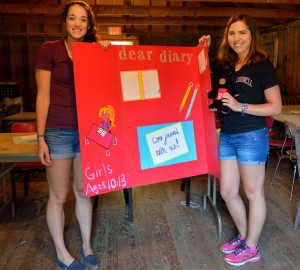
Guided by human development undergraduates Alexandra Holmes '16 and Kathleen McCormick '16, campers reflected on puberty in the "Writing about Life Changes" study led by Jane Mendle, assistant professor of human development.
Following a successful pilot study last summer, Mendle is again partnering with camp director Tim Davis to study the health benefits of writing about teen transitions.
“The 4-H program has always had a wonderful connection with the university,” says Davis, interim executive director and 4-H program leader of Cornell Cooperative Extension in Ontario County.
“There is a real emphasis on how the camp experience will develop the whole child, and if there is a good fit between faculty and our priority areas – healthy living, STEM (science, technology, engineering, and math), or workforce development – we’re very open to discussing partnerships.”
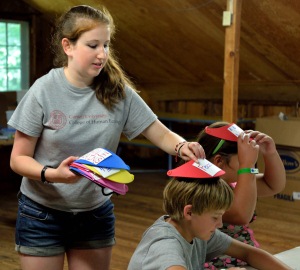
Indeed, 4-H Camp Bristol Hills is becoming a prime spot for Cornell professors and students to pursue research and outreach projects. Along with Mendle’s study this summer, the camp hosted the “Health and Brain Neuroscience Outreach” project by Valerie Reyna, professor of human development. Lindsay Dower '17, an undergraduate in human development, engaged campers in learning about neuroscience, genetics and nutrition through interactive games and bottom-line messages about health designed to help young people make healthy choices.